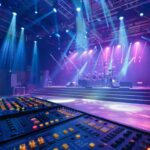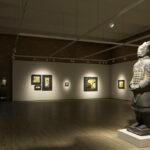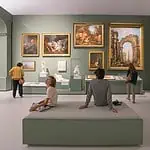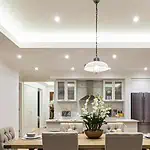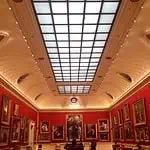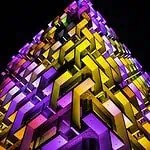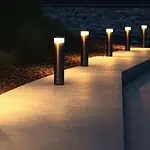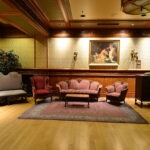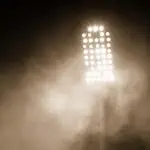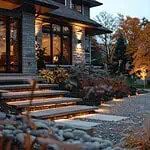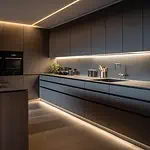Looking for a modern, sleek, and adjustable light setup for your space? Track lighting is your ultimate go-to option. These lights offer you greater flexibility to adjust light direction and angle. Thus, you can have the illumination just at the right point with track lighting.
However, there are different types of track lighting to explore. In this guide, I’ll cover them all, including their cost and application, and help you pick the right one for your project. So, let’s dive in:
What is Track Light?
Track lights are individual light fixtures attached to a track. A single track contains multiple track lights placed at a definite spacing. The specialty of this light is that you can adjust the directions of the light to your desired way. This allows you to adjust the light angle as per your needs.
The tracks of these lightings are available in different designs: straight, curved, or L-shaped. Compared to a traditional light set, installing track lights is much easier. The track contains electrical wiring. So, you need not do individual wiring for each light; they draw power from the track.
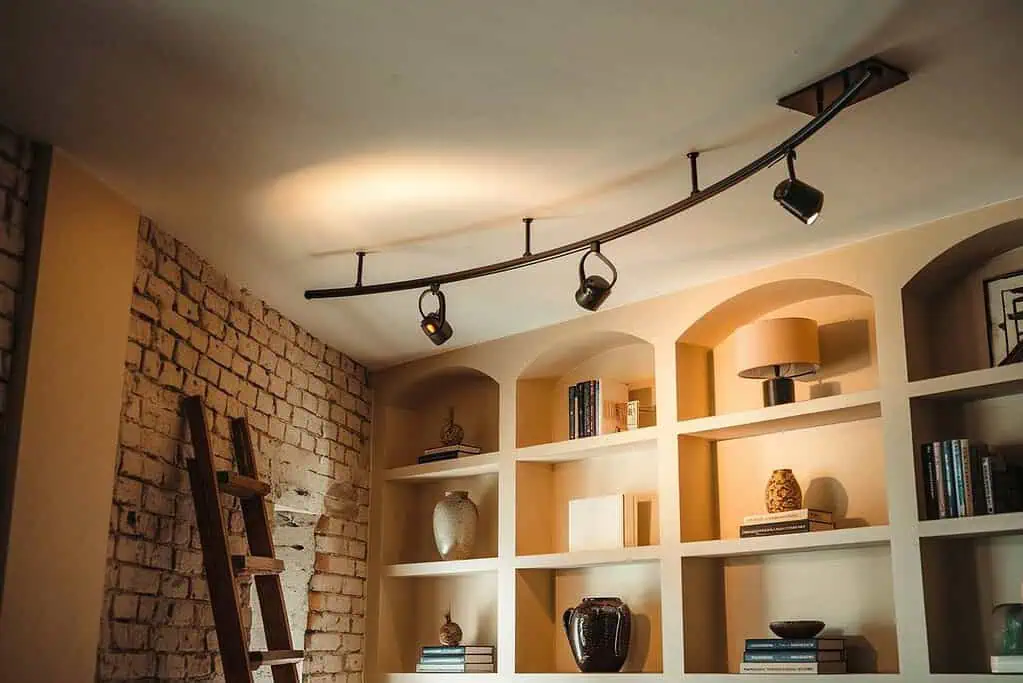
Key Components of Track Lighting
The main part of track lighting includes the track, the fixture, and the power supply.
1. Track
The track or railing is the structural component of the track lighting. They are available in different shapes-straight, L-shaped, U-shaped, or curved. This track is mostly made of aluminum for its lightweight and corrosion-resistant properties. However, steel or PVC tracks are also available.
The electric wirings are housed in the track. They are available as single-circuit tracks and two/three-circuit tracks. In a single circuit track, all lights are controlled together, whereas in a two/three circuit track allows individual control over two/three groups of lights.
2. Fixtures
The light fixtures here are attached to the track and are repositionable. You can move the head of the fixture to adjust the light direction. The common light fixtures used in track lighting include focused or radiant spotlights, pendant lights, floodlights, etc.
For focused lighting, spotlights are the ideal choice, and for wider beam angles, floodlights are used in task lighting. However, for decorative and aesthetic purposes, pendant lights are incorporated with the tracks.
3. Power Supply
The power source supplies electricity to the track using the fixtures’ glow. The source can be hardwired to the ceiling or plug-in (connected to a wall outlet).
However, besides these main parts, a track lighting setup also has other components like connectors, end caps, mounting hardware, and a junction box.
How Does Track Lighting Work?
The main parts of the track lighting, track, fixture, and power supply interact together for operation. The power source supplies electricity to the track, which is distributed all across the rail. The light fixtures attached to the track receive this electricity from the track and emit light.
However, depending on the design, the power wiring can be of direct type. For instance, an end power feed offers a power supply from one end of the track. This is ideal for straight tracks and small installations. For a more even power distribution, a central power feed is opted to supply electricity from the middle of the track and is directed to both sides. For extra-long tracks and to avoid voltage drop, an end power feed is wired to provide electricity from both ends of the track.
Different Types Of Track Lights
Based On Track Style
Linear Track Lighting
Linear track lights are the traditional variant, with straight and rigid tracks that facilitate multiple fixtures. These track lights are popular for task lighting in the kitchen, counter, or workstation. They are also used to highlight artworks or displays.
Monorail Track Lighting
The track used in monorail lighting is thin and flexible, offering a curving or bending facility. You can make creative designs using these tracks. Besides, the light fixtures used in the monorail can be curved up to 30 degrees.
Unlike linear track lighting, which is attached to the ceiling, monorail track lighting hangs a few inches from the ceiling. Besides, they require a transformer and use low-voltage power. If you prefer flexibility and a modern outlook, monorail track lighting is the go-to solution.
Cable Track Lighting
Like monorail tracks, cable track lightings are also designed for low-voltage power and use transformers. However, they use tensioned cables instead of a solid track, and the fixtures remain suspended between two parallel cables.
This pattern of track lights is excellent for high ceilings and open spaces where your fixtures remain suspended, covering up the above height. Besides, with cable tracks, you will also get an aesthetic, floating, and modern light setup. However, such track lighting requires additional hardware for cable tensioning, making the installation process complex.
Flexible Track Lights
They have flexible and adjustable tracks similar to monorail tracks. You can form these flexible tracks to form curves and waves. However, lights here are mounted flush to the ceiling, unlike the hanging lighting of monorail track lighting.
Flexible track lights are excellent for customized lighting as they offer better flexibility than linear track lights. You can also use these for accent lighting on walls, artwork, or furniture.
Based on Track Head Type
Round Back Head Track Light
Round-back head track lights come with a cylindrical or dome-shaped light head with a round back. These lights offer focused and directional lighting. You can use them to highlight specific objects or accent lighting in your home, retail store, or galleries.
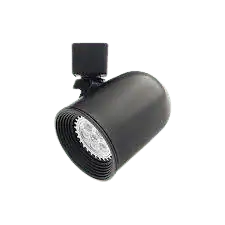
Step Head Track Light
Step head track lights are the most common variant. The back of these light heads features a stepped, tiered design. The simple design of this lighting works well with any type of track.
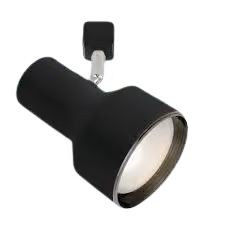
Pinhole Head Track Light
Pinhole head track light features a narrow-beam track head with a small, pinhole-style opening. These track lights are excellent for highlighting small or precise objects like jewelry or artwork.

Gimbal Head Track Light
If you are looking for multi-directional lighting, gimbal head track lights are the go-to solution. These lights feature a pivoting, ring-like head design that allows full 360° rotation. So, you can use them for applications that require extreme adjustability, such as photography, galleries, and display setups.
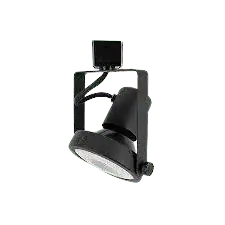
Based On Electrical Configuration
Single-phase Tracks
Single-phase tracks contain a single circuit all along the track. Here, all the lights switch on/off together. These tracks are used for small installations like houses or small commercial applications.
Three-phase Track
A three-phase track offers you greater flexibility and control over the track lights. Unlike single-phase tracks that power all light together, three-phase tracks allow you separate control over LED groups. It has three power-carrying sections (phases) and one neutral section. And with such a configuration, it delivers three times the power of a single-phase track. Moreover, they support various layouts with I, L, T, and X-shaped connectors to meet design requirements.
Low Voltage Tracks
Low-voltage tracks use 12V or 24V power and require a transformer. These tracks are found in monorail and cable rail track lighting. As they run under low voltage, they are safer than line voltage and ideal for residential and smaller applications. Moreover, low-voltage tracks are energy-efficient and pair up with LED lights.
Line Voltage Tracks
Line voltage tracks operate at standard household voltage, 120V or 240V. These tracks don’t require any transformer as they receive power directly from the mains. Line voltage tracks are suitable for general lighting of houses, offices, or commercial spaces. However, they are not as energy-efficient as low-voltage tracks, but installation is simple.
Benefits of Track Lighting
- Track lights are physically adjustable. You can direct the light to your desired direction or add/remove fixtures as you need.
- It offers a sleek and modern look to your space.
- The slim-fit design of the track lighting is ideal for small spaces.
- Using a single track, you can illuminate multiple areas by directing the fixtures in different directions.
- You can get individual control over light groups by choosing three-phase track lighting.
- Track lighting gives you vast choices in fixture selection. You can choose spotlights, floodlights, or pendant lights that match your home style.
- You can use these lightings for both task and accent lighting.
- Simple installation as multiple lights are connected to a single track.
- Track lighting doesn’t require much upfront cost. Besides, using LED lights also makes it energy-efficient.
Things To Consider While Buying Track Light: Buying Guide
1. Design & Material of Track Head
The track head is the part that holds the light fixture and allows adjustments. They come in different designs, such as round back head, step head, pinhole head, and gimbal head. Choose one that fits your interior best. However, considering the material of the track head is also crucial to ensure durability and robustness. Common material for track heads includes:
- Metal
- Plastic
- Ceramic
- Aluminum
If durability is your preference, go for track lighting with metal track heads. Besides ensuring robustness, they offer a modern and sleek look to your space. Again, aluminum track heads are excellent for applications that need robustness and lightweight features. Plastic tracks are a cost-effective option.
2. Tack Head Shades
The shade of the track head is the outer covering or diffuser that surrounds the luminary. The track heads are available in different shade types. You must choose one, considering the style of your space. The common shades used in track heads are as follows:
- Frosted glass
- Amber glass
- Tiffany-style glass
- Champagne glass
- Colored glass
- White
- Black
- Brushed nickel
- Fabric
Metal track head shades are most popular for track lights that offer a modern look. You can go for black, white, dark bronze, or solid metallic shades. Besides, glass shades offer a wide range of variations- frosted, amber, Tiffany-style, colored, champagne glass, and more. Another interesting material used in track lighting is magnetic fabric. This can complement your interior designs seamlessly.
3. Railing Finish Options
To get the best outcome for your track lighting, choose rail finishes considering the style of your room. The standard railing finish option includes the following:
- Black Powder-coated
To create dynamic contrast against a lighter ceiling, go for black powder-coated railings. This offers you a modern and sleek look to your space.
- White Powder-coated
Want to blend your lighting with the white ceiling for a seamless outlook? Go for white powder-coated railings. This offers a minimalistic and clean finish to your light setup.
- Brushed Nickel
Bruised nickel railings have a subtle metallic silver with a matte, brushed texture. This works great to bring a contemporary effect. You can use these tracks to light up your kitchen, or offices, or give your living space a stylish look.
- Oil-rubbed Bronze
If you want a traditional or vintage effect on your space, these oil-rubbed bronze railings are the go-to option. The dark brown and warm tone of bronze works excellently to give an aged or rustic vibe. You can pair them up with classic dining spaces, rustic kitchens, or other vintage spaces without any second thought.
- Polished Chrome
Polished chrome railings complement luxurious interior designs best. The highly reflective, mirror-like silver finish of these railings makes your space look expensive. You can use them for high-budget applications or commercial spaces.
- Other Metallic Finishes
There are different metallic finishes available for the railing to match your interior setting. This includes bronze, satin nickel, brushed gold, etc.
4. Design Of The Fixture or Track Light
One of the advantages of using track lighting is that it offers you a versatile option to choose fixture styles. You can add different types of fixtures like spotlights, pendant lights, or other designs to get your desired style.
- Swing Arm Lights
For greater flexibility, choose track lighting with swing arms. These lights come with moveable heads, allowing you to focus the light on the desired object or direction. Swing arm track lights are excellent for task lighting in the kitchen, studio, and other working spaces.
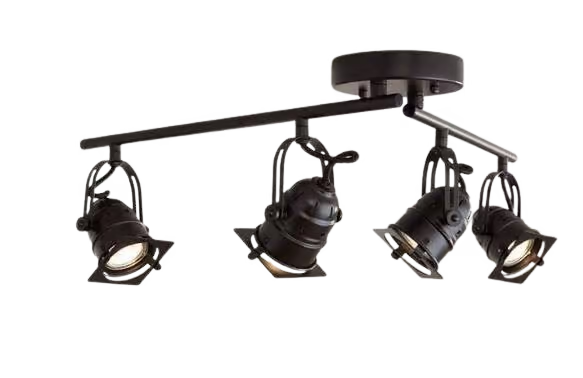
- Spotlights
If you are using track lighting to focus any object or for displays, spotlights are the best option. The narrow beam of these lights falls directly on the object that you want to highlight. Thus, it grabs the attention of the visitors to your desired piece or space.

- Linear Track Lights
Linear track lights are track-mounted fixtures arranged in a continuous line. They cover a continuous light flow ideal for office and minimal light setup.
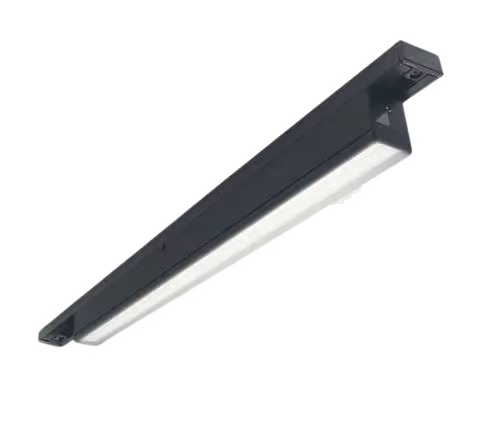
- Pendant
You can use pendant lights in your track lighting as a statement piece. These hanging lights add a dimension to your space. Besides, pendant lights are available in various sleek and fancy designs. You can incorporate different colors and designs of pendant lights to give your space the desired style, a modern or rustic vibe.
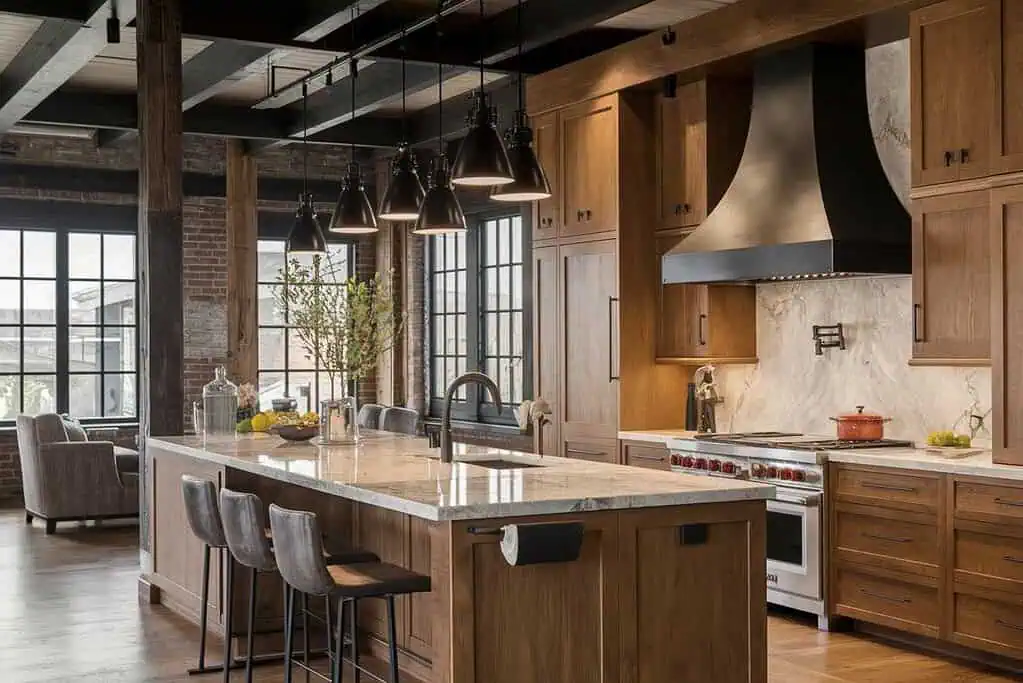
5. Style Of Track Lighting
The design of light can significantly contribute to achieving the desired style for your space. For instance, if you want to give a modern look to your space, choose metallic track lights. For railing, you can go for black/white powder polished or metallic railings.
Again, for a traditional or vintage look, an oil-rubbed bronze railing works exceptionally well. You can pair them with wooden or rustic pendant lights to get a vintage outlook. For an industrial style, you can light with metal cone heads or cage fixtures.
6. Lumen Rating Of Track Lighting
While selecting fixtures for track lighting, consider its lumen rating. Different area has varying brightness requirements. The chart below will guide you in picking the correct lumen rating for different areas:
| Space | Recommended Lumens |
| Small Room (e.g., Home Office) | 500 – 1,000 lumens |
| Medium Room (e.g., Living Room) | 1,000 – 2,500 lumens |
| Bathroom | 3,000 lumens |
| Large Kitchen or Dining Area | 8,000 lumens |
7. Voltage & Wattage Considerations
The voltage of the fixture must match that of the power supply. If your fixtures are designed for low voltage, you must use a low-voltage track for the setup. Make sure the voltage of the lighting system matches that of the power source. If your track lighting setup is designed for 12V, using a 24V power supply will damage the bulb and cause safety hazards.
Besides, consider the maximum wattage capacity of the circuit. The total wattage of all the fixtures attached to the track must not exceed its maximum capacity.
8. Consider the Size of the Space
If you have a room of a small height, adding suspended track lighting will make the room look smaller. That is why it is crucial to consider your space. For small rooms, linear track lights work best as they don’t take up much space for the fixture. However, if you have a high-ceiling room, you can opt for hanging fixtures for your track lighting. This will not only add dimension to your space but also beautify your room.
9. Bulb Option
While LED lights are the most popular option for track lighting due to their high energy efficiency, other bulb options are also open. Besides LED, halogen, krypton, and CFL bulbs are also used in track lighting setups.
10. Track Lighting Cost
The pricing of the track lighting setup depends on several factors like:
- Length of the track
- Material or railing polish of the track
- Head of the track, its material, and shades
- Fixture type, brand & quality
- Electrical configuration, accessories, and connectors
- Installation fee for the electrician
- Lighting features, and more
However, below, I have drafted a pricing idea using this; you can plan your budget for track lighting:
| Item | Price Range |
| Lighting Tracks | $40 – $80 per metre |
| Track Heads | $50 – $400+ each |
| Connectors | $20 – $80+ each |
| End Caps | $5 – $10 each |
What is the Difference Between COB Track Light and Dark Light?
COB track light uses Chip-on-Board (COB) technology. Here, LEDs are arranged at a high density and mounted directly on the PCB. As a result, you get more concentrated and bright lighting from the COB track light.
In contrast, dark light track lighting uses Surface-Mounted Diode (SMD) technology. The reflectors and lenses of these lights are designed to shield the light source from direct view. As a result, you get glare-free, more diffused, and softer light with less intensity.
Therefore, if you need a high brightness and more focused illumination, choose COB track light. However, for accent and soft, even lighting, dark track lights are good to go.
Drawbacks of Track Lighting
Not Suitable for Low-Ceiling Rooms
Track lights are not suitable for low-ceiling rooms. Installing these lights will make your room look smaller. Besides, it creates safety hazards, especially when swinging doors, moving objects, or ceiling fans are used.
Clashing with Traditional Styles
Track lights complement modern light settings best. If your interior is decorated in a formal or traditional manner, track lighting may look mismatched.
Limited Fixture Compatibility
The track lighting systems, in most cases, are brand-specific. This limits the flexibility of replacing or choosing fixtures as you wish.
How To Install Track Lighting? – Stepwise Guide
Step 1: Design your track and measure the required track length.
Step 2: Buy track, connectors (L or T-shaped), end caps, and other essential accessories like- screws, nuts, etc.
Step 3: Cut the track to your desired length if necessary, and connect all the railing using connectors to give the desired shape, L, J, etc.
Step 4: Remove the existing fixtures and expose the electric box. Before doing so, make sure to turn the power off. Now, wire the power end adapter and float the feed into the electrical box.
Step 5: To fasten the track on the ceiling, mark points and drill ⅜-inch (9.5 mm) holes for toggle bolts.
Step 6: Insert toggle bolts in the holes and secure them with nuts. Next, screw the track on the ceiling and attach the floating feed.
Step 7: Install the fixture to the track and power it back. Turn on the switch and it’s done!
Cleaning and Maintenance Tips
- For regular light and track cleaning, use a soft cloth or duster. Avoid using harsh chemicals for cleaning.
- Check the bulbs and replace them if they are damaged or show lighting issues like flickering or low brightness.
- Inspect wire connection to avoid electric hazards.
- Avoid modifying the lights or replacing their internal parts.
Troubleshooting Common Issues Of Track Lights
While installing and using track lights, you may go through slime issues. The common problems are noted below, along with solutions:
| Issue | Cause | Solution |
| Track Light Won’t Turn On | • Power is off • Faulty wiring | • Ensure the power is on • Check all wiring connections |
| Flickering Lights | • Loose connection • Damaged bulb | • Tighten connections • Replace faulty bulbs |
| Unwanted Dimmed Light | • Incorrect bulb wattage • Low voltage | • Check bulb compatibility • Ensure proper voltage |
| The track is Hot to the Touch | • High wattage load causing overheating of the track and fixture | • Use lower-wattage bulbs • Ensure proper ventilation |
| Sudden Shut Off | • Loose wiring • Faulty connections | • Inspect wiring and connections • Repair or replace damaged parts |
| Track Lights Won’t Stay in Place | • Loose mounting • Fixture instability | • Tighten the fixture • Secure it firmly to the track |
Top 6 Ideas For Track Lighting
1. Installing Track Lights Above The Kitchen Island
Track lighting is as popular as kitchen task lighting. Adding this lighting setup above your kitchen island or countertop offers focused lighting for comfortable tasking. Moreover, adding designer pendant lights will also intensify your kitchen outlook.
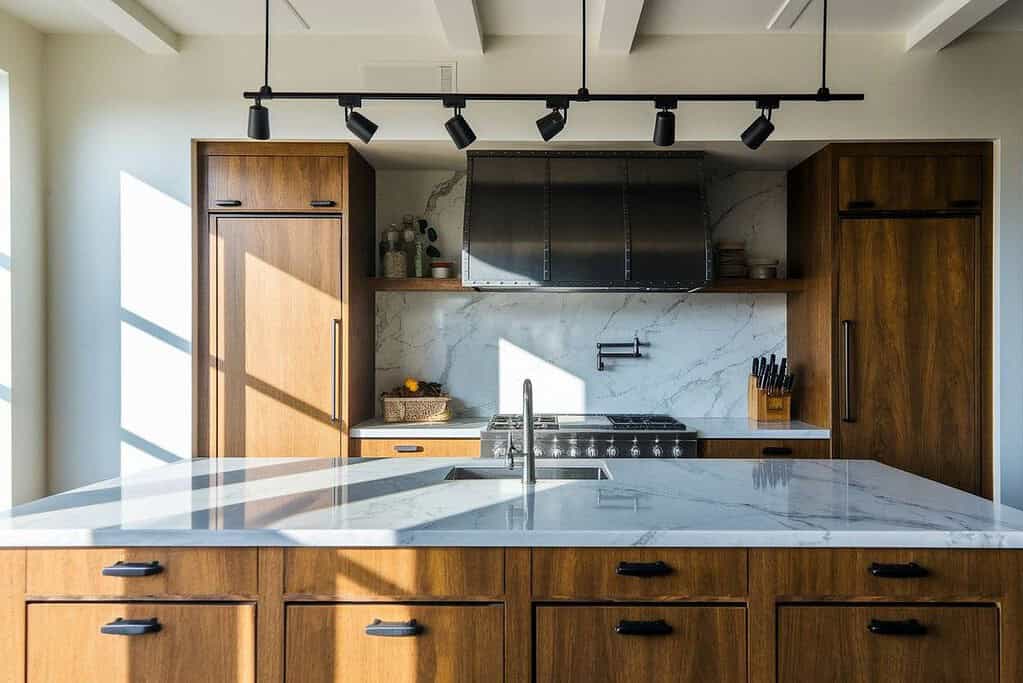
2. Accent Lighting for Artwork
Track lighting is widely used in museums and art galleries to highlight art pieces and special elements. You can direct the track head to the design artwork and thus highlight them.
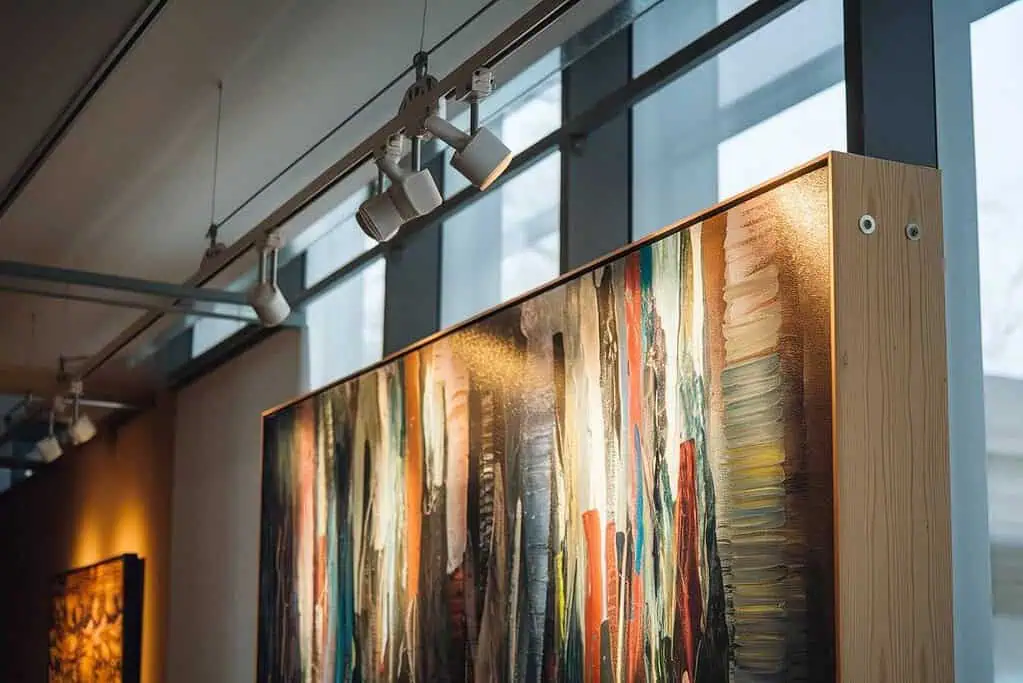
3. Install Track Lighting In Office
Track lights work excellently for illuminating the desks of employees for task lighting. You can install this lighting above the table of the conference room or on the employees’ working stations.
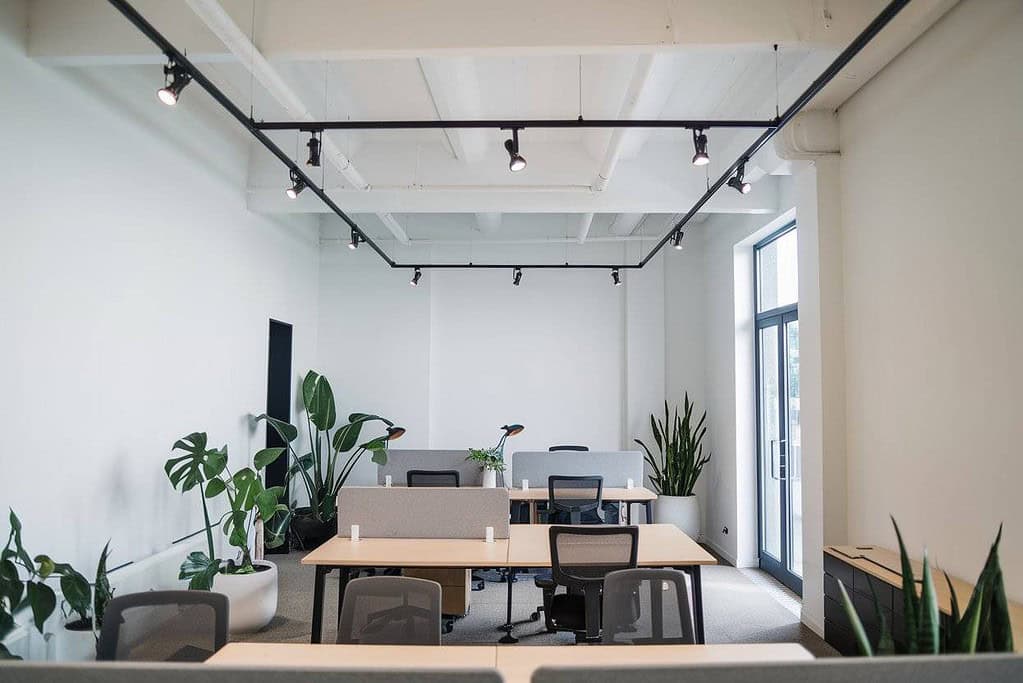
4. Mirror & Vanity Lighting
Whether it’s your bedroom mirror or bathroom vanity, track lighting works great for such applications. This not only offers a proper light setup for your vanity but also contributes to beautifying your space. However, while installing track lights above the mirror, be careful about the placement and make sure it doesn’t create shadows.
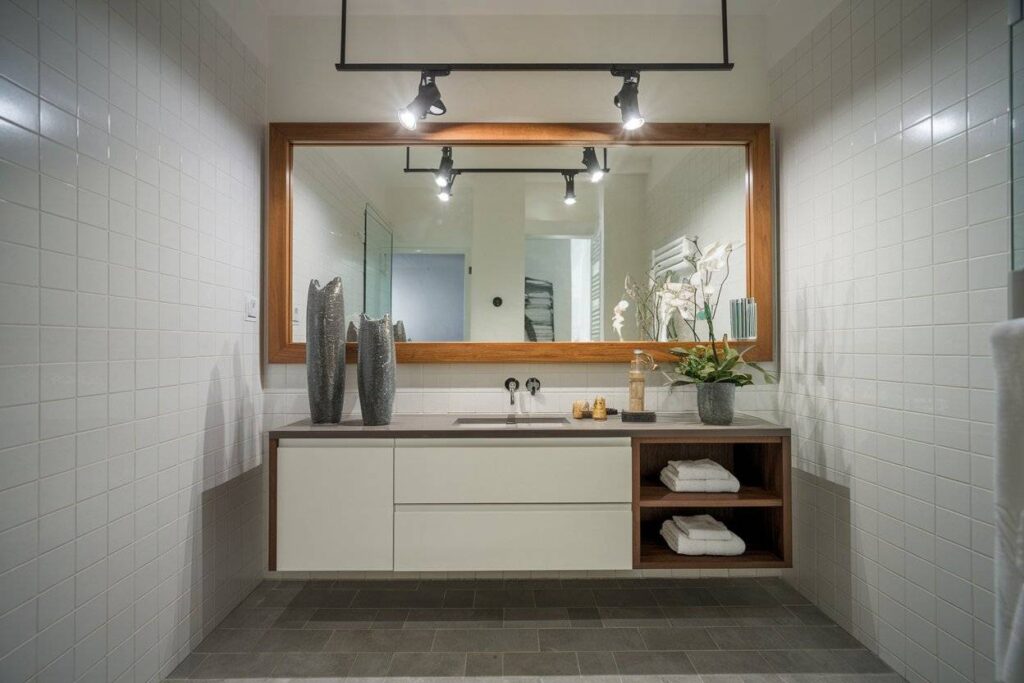
5. Product Display In Retail Stores
Track lighting is an excellent option to highlight products in retail stores. You can direct the track heads to your product display shelves to facilitate customers seeing the product in a sufficient light setup. You can also use them to focus your exclusive collections and grab passersby’s attention.
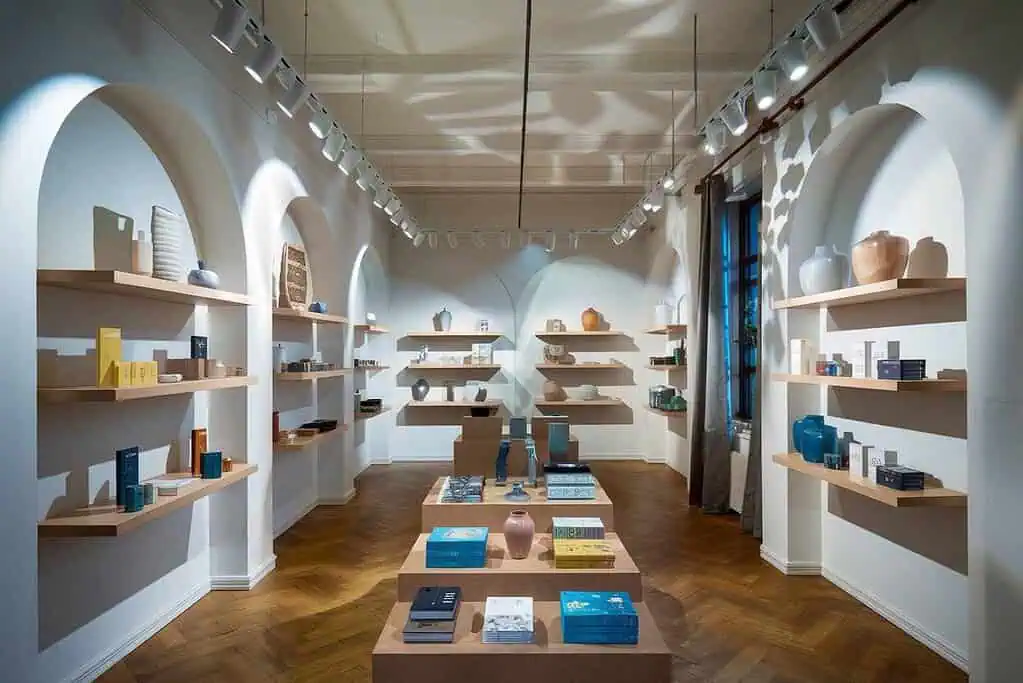
6. Use Track Lighting as Desk Light
Installing track lights above your desk facilitates reading and offers sufficient illumination for tasks on your desk. You can adjust the track head in your comfortable direction while reading. Thus, it enhances your reading or work experience.
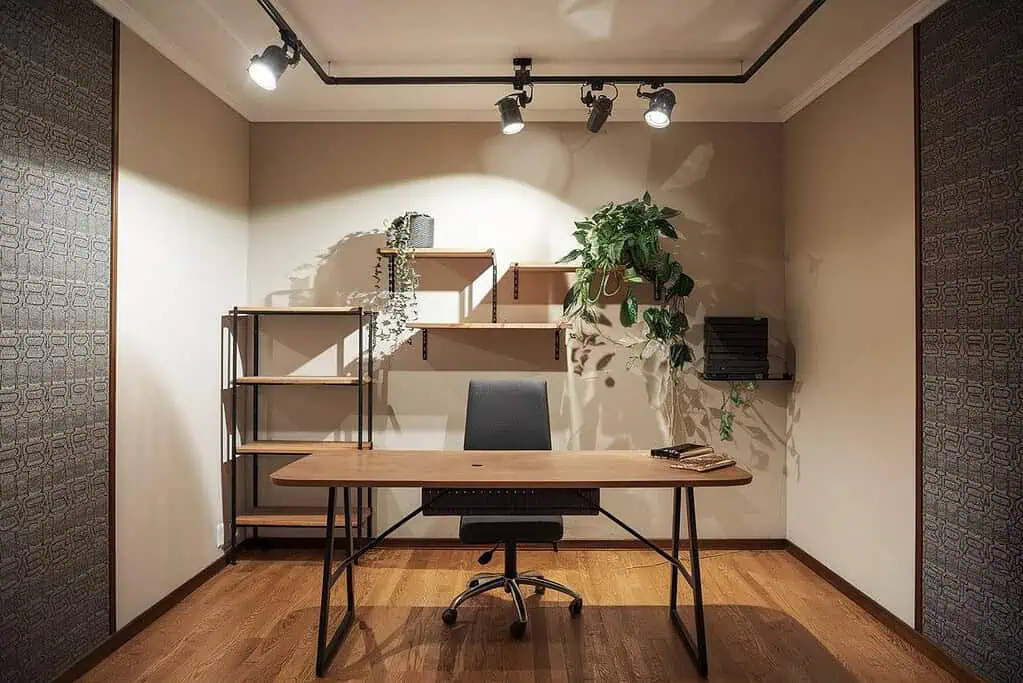
The Future of Track Lighting: New Trends to Watch
Smart Integration
With upgraded technology, track lighting is entering smart integrations. This allows you to control the lighting via your smartphone. Besides, you can turn on/off the light or adjust its brightness with voice commands. Smart integration also brings advanced features like color changing, scheduling, etc.
Use Of Sustainable Materials
As the world moves toward greener energy, the use of sustainable materials in track lights is increasing. For instance, the use of halogen, incandescent, and CFL track lights is being replaced by energy-efficient LEDs. Besides, the use of recycled metals and plastics in manufacturing track lighting is increasing to minimize energy impact.
Dynamic Lighting Effects
The track lights are coming with more interactive features like color-changing lights that react to motion, sounds, and daytime. Thus, it will offer more engaging and smart lighting solutions.
Enhanced Durability and Longevity
With improved technology, more durable and long-lasting track lighting systems are evolving. In the upcoming days, we will find glare-free and high-quality lighting in track lighting.
FAQs
Usually, the track lighting kit includes the entire setup for installing the track lighting. It covers the tracks, light fixture, track heads, connectors, and power supply.
Track lighting uses a fixed track that holds adjustable track lights. In contrast, rail lighting features a flexible cable or rods with which the adjustable track lights are attached. Besides, there are differences in installation methods. Track lighting uses mounting brackets and screws to attach the track to the ceiling. Meanwhile, rail lighting uses wall brackets or ceiling anchors, improving flexible shaping and carving.
The railing of the track lighting is connected to the power supply. The track heads attached to the track receive electricity from it and power them up to emit light.
Linear track lighting is the most common type of track lighting. It features a rigid and straight tack attached to the ceiling. These tracks can be surface-mounted or recessed.
The lifespan of the track lighting depends on the type of fixture you are using. If you use LED track lights, they last up to 25,000 to 50,000 hours, which is about 10 to 20 years.
Track lighting is connected to the home’s main electrical circuit, and it usually operates at AC (alternating current). However, when you are using low-voltage lights like LED, a transformer is required to convert AC to DC (direct current).
No, not all track lights are universal. Different brands use different track types like H, J, and L, which are not interchangeable. So, you must maintain brand consistency while installing track lighting.
Yes, the rail of the track light is cuttable. By chance, if you purchase a longer track, you can easily cut it with a hacksaw to fit your requirements. This also offers additional flexibility to customize your track layouts.
The Bottom Line
Track lights are excellent for both task and accent lighting. However, you must consider the track type, track heads, and fixture design to match the setup seamlessly with your interior design. For an energy-efficient solution, always go for LED lighting. They are more durable and long-lasting than traditional track lights.
However, the cost of the track lighting depends on several factors, such as track length, material, fixture type, installation complexity, and more. Nevertheless, always purchase track lights from reliable suppliers or manufacturers. And don’t forget to check the warranty and certifications for reliability.
